Lonnie Jandreau grew up in St. Francis, Maine, on the St. Johns River, close enough to Canada that he could – and did – swim across the river from Maine to Canada as a kid. He has spent the better part of the past four and a half decades working as a forester in Maine’s Aroostook County. Since 2005, he’s carried a camera with him when he heads into the woods, snapping photos of lynx kittens, sparring bull moose, and snowy-snouted red foxes – and he’s become a regular contributor to Northern Woodlands’ Reader Photo Gallery. He also collects shed antlers, which he and his wife Janet spend hours carving into woodsy scenes for their business, Maine Antler Works.
Myself and my brothers were pretty much raised outside. My dad was a logger for 40 years and didn’t do a lot of sitting around, didn’t watch TV, and was always doing outside activities, mainly hunting and fishing. We followed right in his footsteps. Often times he’d go hunting, and there would be three boys behind him. He’d have to quiet us down, because we’d get restless and want to talk. I still hunt and fish. I’ve got a nice piece of land where I can hunt, and I know every tree down there.
One brother is a forester, and the other one is a logger. We didn’t fall far from the tree. When we were 5 or 6 years old, my dad used to cut wood with his horse. On a Sunday morning he’d go into the woods and feed the horse. He only had a car, so he’d put chains on the tires and bring a couple bales of hay out to the woods to feed the horse. We used to love going with him. He did horse logging for about eight years, then machines started coming in.
I had a good inclination at age 18 that I wanted to work outdoors. I originally attended Unity College to pursue a game warden career. However, back when I went to college, that didn’t pay very much, and there wasn’t a lot of demand. In forestry there was more opportunity. I got my forestry license, and that’s been very valuable in northern Maine. I have worked for Prentiss & Carlisle for 17 years and worked as a forester with other woodland companies for 26 years before that. And I do a lot of private work on the side.
I encourage kids, if they don’t know what they want to do, to get their forestry license and go into forestry. There’s going to be a lot of work opportunities. Wood is a renewable resource. If you cut wood, it’s going to be ready again in 30 years. We saw what lumber did in 2021; there’s a big demand for it, and it’s renewable. Forest products are important now and will be in the future.
I’m not sure most people realize the amount of time and energy people put into forestry and forest product-related jobs so folks can enjoy the everyday things they take for granted: paper, toilet paper, lumber, food containers, and the list goes on. Also, the amount of money the forest industry puts into the economy. Foresters do not just ride around in a pickup all week. A lot of field work needs to be done, in rain, snow, cold, hot weather conditions. The days vary from some office work, mapping, making maps, writing out job orders, making sure all the crews (wood harvesters, trucks, road builders) are set. A lot of time is spent scouting out new areas and getting areas ready for a harvest, marking out boundary lines, streams, lakes.
These days, I’m one of the older guys, and us older guys bring a lot of value to these companies. People look to me more than ever for the answers. The forest has changed a lot from when I started. Now there’s a lot more regrowth, smaller wood, different mix. The wildlife has changed – where 35 years ago we had an abundance of whitetail deer, now it’s more common to see moose and lynx in the mix, fewer deer. And it certainly takes a lot less people to produce a cord of wood, since it’s mostly mechanical operations now. Finding people to do this work will be a challenge. The forest will have the available resources to expand the industry into new markets, but I think it will be harder to find and keep reliable people. Long hours, poor benefits will keep a lot of younger people away.
I used to come home from work and tell my wife I’ve seen all these cool things – two bull moose fighting or a lynx and a kitten. So in 2005 she bought me a nice Nikon camera. I have a new Nikon now, and it sits right on my seat all the time. The company uses my photos for their newsletter, and I sell some of them. I like photography as much as hunting. It’s a different kind of hunting. I know where to go to find these animals, because at work I’m in the woods and I see where they are, then I go back with my camera. It’s an addiction, I’d say. It’s very enjoyable. Most of the time you’re going to come home empty handed, but I always try to take a picture of something.
One of my most memorable photos is of a lynx, who just sat in the road for half an hour and was looking in different directions and looking at me. She wasn’t afraid of me. She had two kittens with her, but they took off, and she just sat there and let me take pictures. I’ve seen a lot of different things, but that one stands out.
I’ve also helped the biologists from the Maine Department of Inland Fisheries & Wildlife when they monitor bear dens. The females have already been collared, and when they have cubs, the biologists weigh the cubs, and do a blood test, and put tags on the cubs. The female usually gets a new collar. Every year, they monitor the collared bears to see how the bear population is doing in Maine, and it’s thriving. In February they do the yearlings. In March they take you into the newborns, born in January. I’ve had three newborn cubs in my hands at one time. It’s pretty amazing how they do it.
I have been looking for moose antler sheds for over 30 years. I always thought they were neat, and folks from away were looking to buy antler sheds. I started selling my collected antlers to people from all over the U.S., including a woman in Minnesota, Nancy Sager, who carves moose antlers and gives classes on carving. She invited my wife and myself out to her home to take a class in 2015, and ever since then we have been carving antlers with scenery, animals, cabins, and anything else that our customers request.
It is hard, but once you figure it out it’s really fun and relaxing. You decide what you want to put on the antler and make a design. You cut out the basics with a saw, then use a Dremel tool to round the corners and square the edges. A nice carving can sell for $800. It takes anywhere from 10 to 20 hours to make a nice, big carving. You have to decide how far you want to go with it. Sometimes I do all the preliminary stuff for a carving, and my wife finishes it. The final product is the best, because we work on it together. We sell the antlers from our shop. We get a lot of out of staters who come up to Maine to hunt, and they like the antlers. We go to craft shows occasionally, and we’ll do more of that once we retire.
This month I’ve shifted to working part time with Prentiss & Carlisle, weaning myself slowly toward retiring. I had this week off, and Monday I didn’t know what to do with myself. You’ve got to find a routine. I can’t stay in the house all day. I have to be outside. I’m lucky I have the land.
We own 125 acres along the Aroostook River. Our neighbor uses the east side of it for their 60 head of cattle. The rest is woodland. I have a management plan and harvest wood there and take good care of it. Mostly now it’s about the wildlife. I have white-tailed deer, moose, a lot of bear, coyotes, fishers and martens, rabbits, squirrels. And occasionally you see eagles fly over. We have a cabin on our land and a rental house on the property, too. We rent it out to hunters and other people who want to come up. We have several parties that rent it out for snowmobiling in the winter.
My favorite time in the woods is when I’m out with the dog and either taking wildlife photos or finding moose sheds. Boo is a Pomeranian poodle. When we got him, he was supposed to stay home with a nice little bow around his neck. I took him to work one time, and that was the end of him staying home. He’s been in the woods with me 10 or 11 years. He knows how to behave in the woods. He’s learned all the ways of the wild. I can have the window of the truck open and a bull moose 50 feet away, and he doesn’t make a sound while I’m taking photos. On those cold days when the snow is deep, I carry him in my shirt. That’s how small he is. He’s 14 pounds. He knows that when I take the shotgun out, we’re going bird hunting. He knows how to flush birds, and he retrieves them. I never trained him, he just learned it on his own. Every day he’s either at the office or in the pickup or walking in the woods with me.


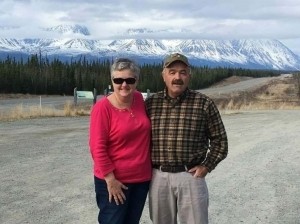
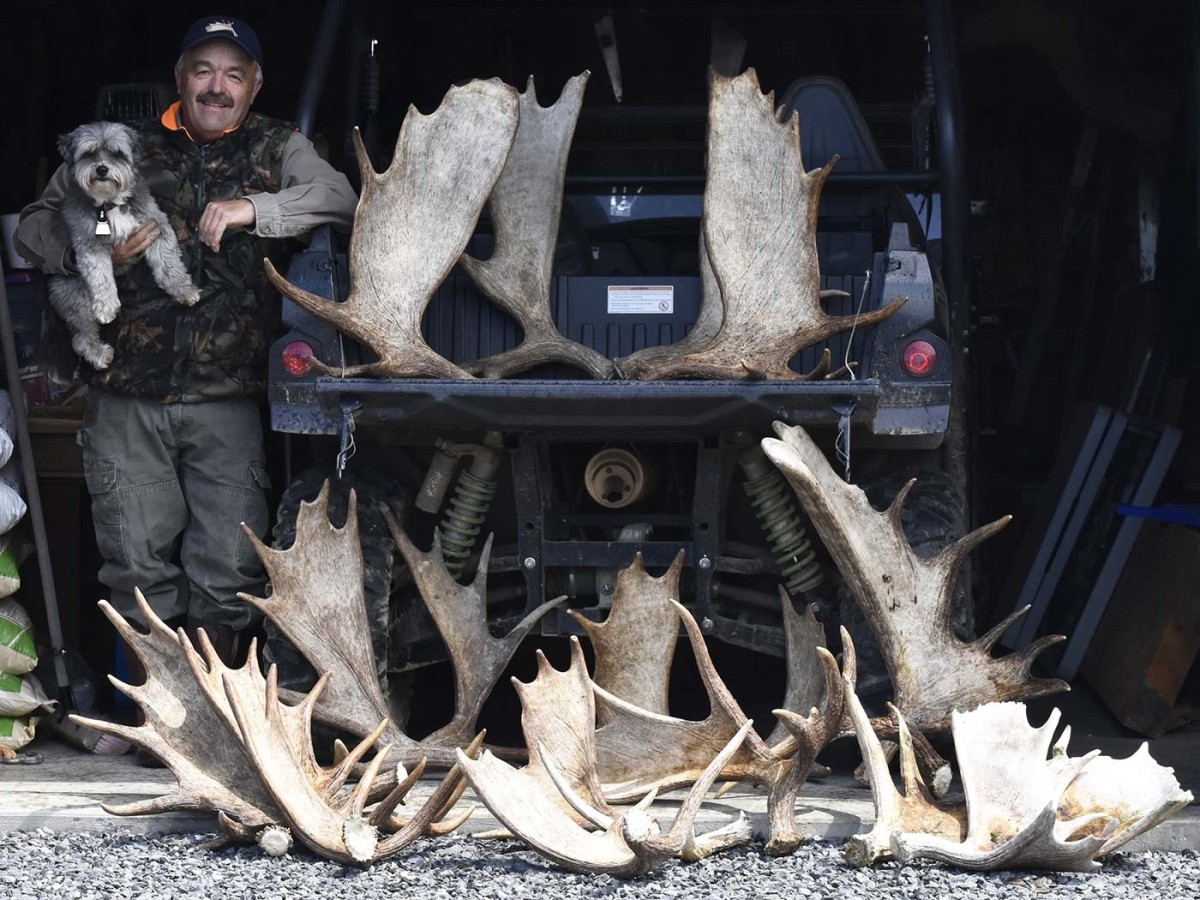
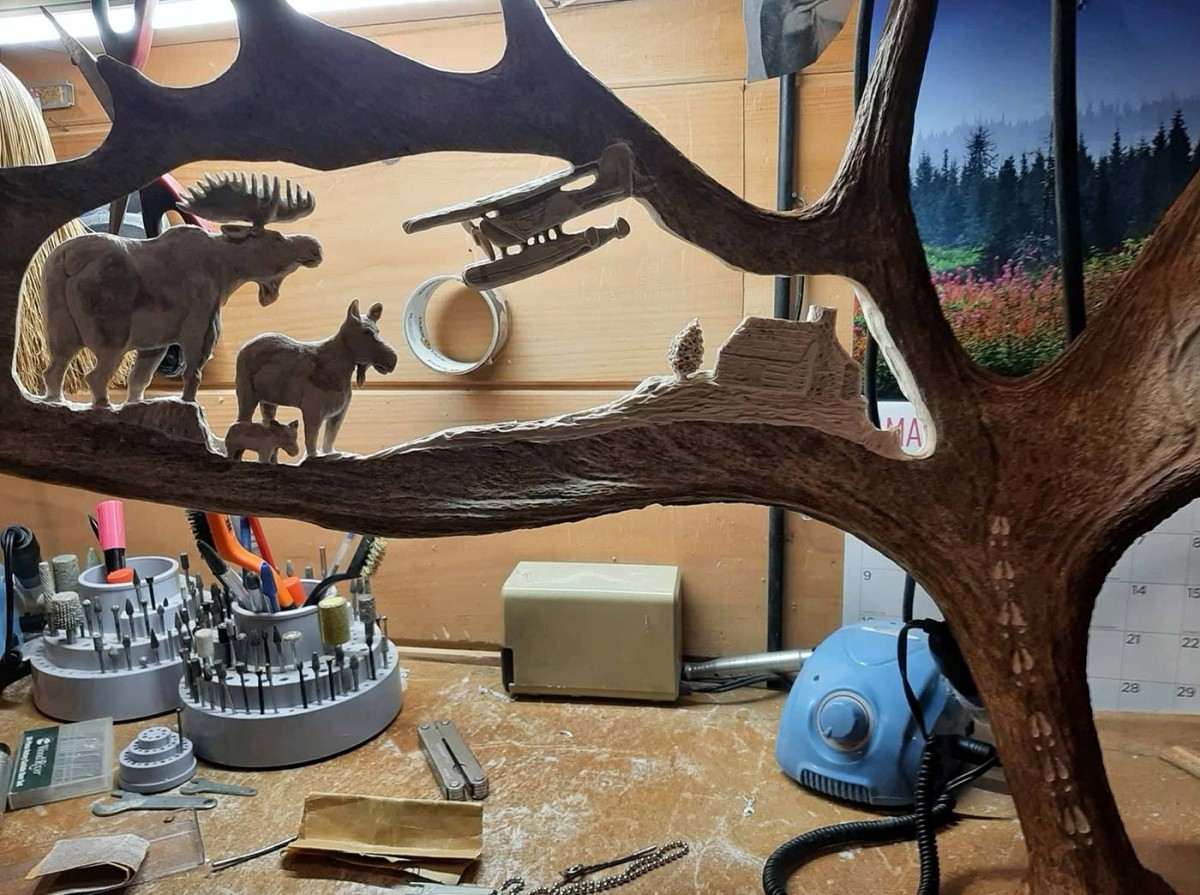
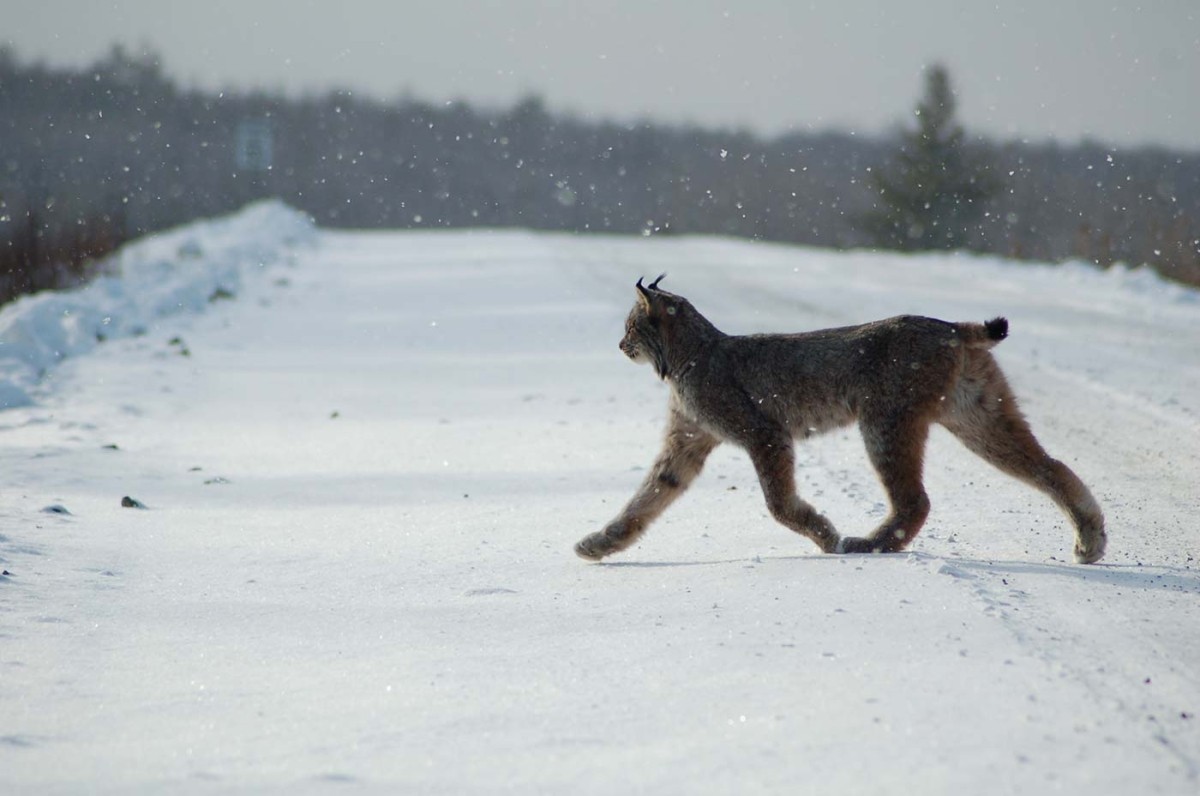
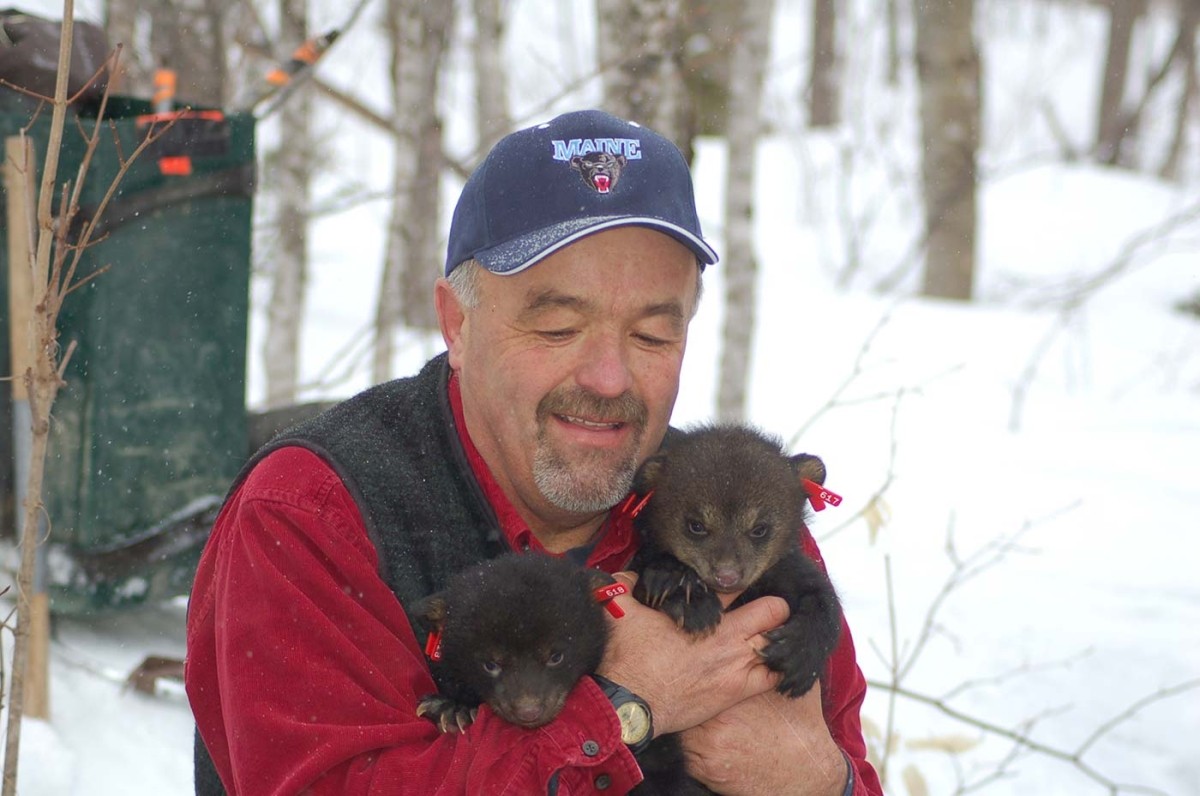
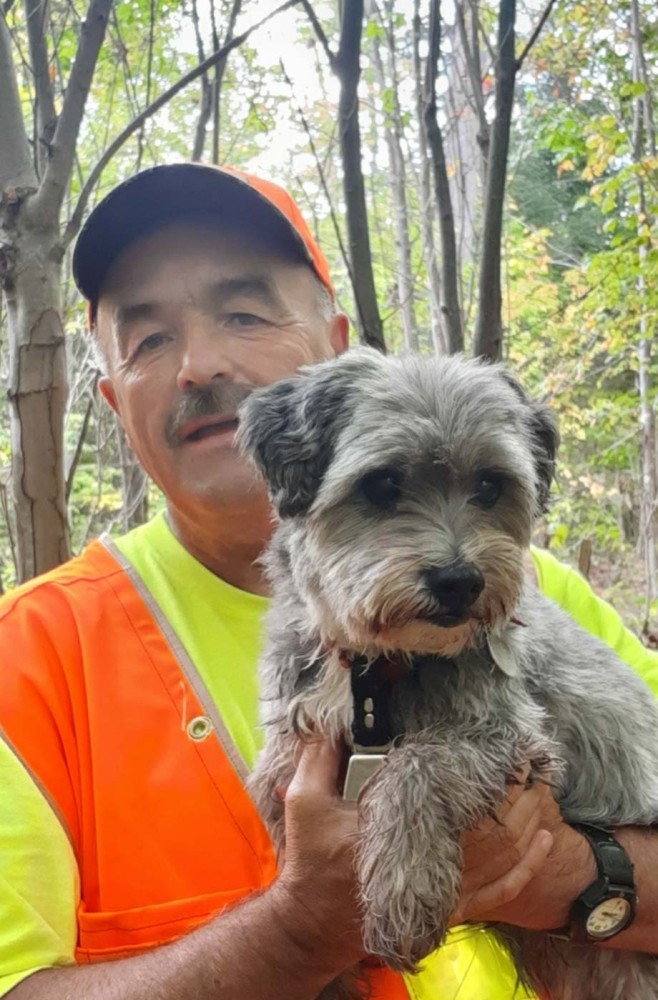
Discussion *